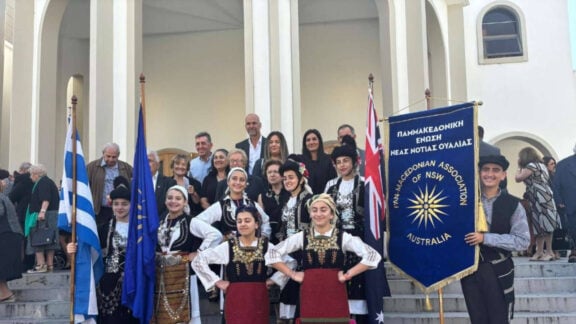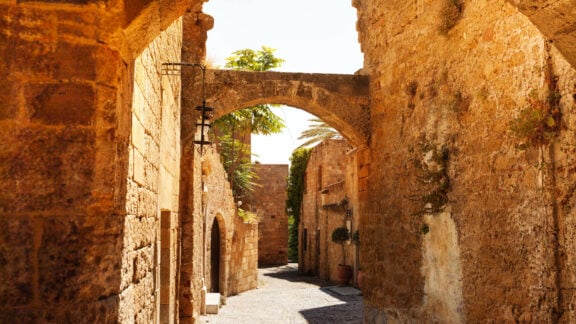The design of the current Greek flag was adopted by the First National Assembly on 13 January 1822.
It was a gathering of Greek revolutionaries at Epidaurus. The Executive of 1822 (Εκτελεστικό του 1822) was one of the two chambers of the First National Assembly.
There were five Executive members and they were authorised to implement the decisions of the Legislative Corps. The term of office was initially one year. The Executive’s tenure lasted from January 1822 to April 1823, when the Second National Assembly at Astros elected a new Executive.
The members, as elected by the First National Assembly, were:
• Alexandros Mavrokordatos, President of the Executive
• Athanasios Kanakaris, died in January 1823
• Ioannis Orlandos
• Anagnostis Deligiannis
• Ioannis Logothetis
That assembly proceeded and approved the Declaration of Independence, together with the design of the Greek flag. The provisional regime of Greece was also laid out and approved i.e., the Greek Constitution of 1822. The Declaration of Independence in the context of the international legal order was recognised by the then five ‘great powers’ of Europe i.e., France, Britain, Russia, Austria (from 1867-1918, the Austria-Hungarian Empire), and Prussia (later the German Empire). The Modern Greek nation-state as we know it today was born, notwithstanding the millennia of our accrued history as a Hellenic people.
READ MORE: The Greek Diaspora, before Greece
The flag has nine equal horizontal stripes that alternate between blue and white (five blue and four white), and a white cross on a blue square field in the canton. The nine stripes are claimed to represent the nine syllables in the Greek phrase Ελευθερία ή θάνατος which translates: “Freedom or Death.” This was a battle cry during the Greek War of Independence.
The stripes symbolize each letter in the Greek word for “freedom.” Others believe that the stripes represent the nine Greek muse fundamental to the culture and the human condition:
• Calliope was the muse of epic poetry;
• Clio was the muse of history;
• Erato was the muse of love poetry;
• Euterpe was the muse of music;
• Melpomene was the muse of tragedy;
• Polyhymnia was the muse of sacred poetry;
• Terpsichore was the muse of dance; and
• Thalia was the muse of comedy.
READ MORE: Greece 2021: Celebrations for 200 years since Greece’s War of Independence
The white in the flag reflects the purity of the Greek independence struggle, while the blue represents the colour of the sea and the sky. The cross in the canton represents the Greek Orthodox faith.








